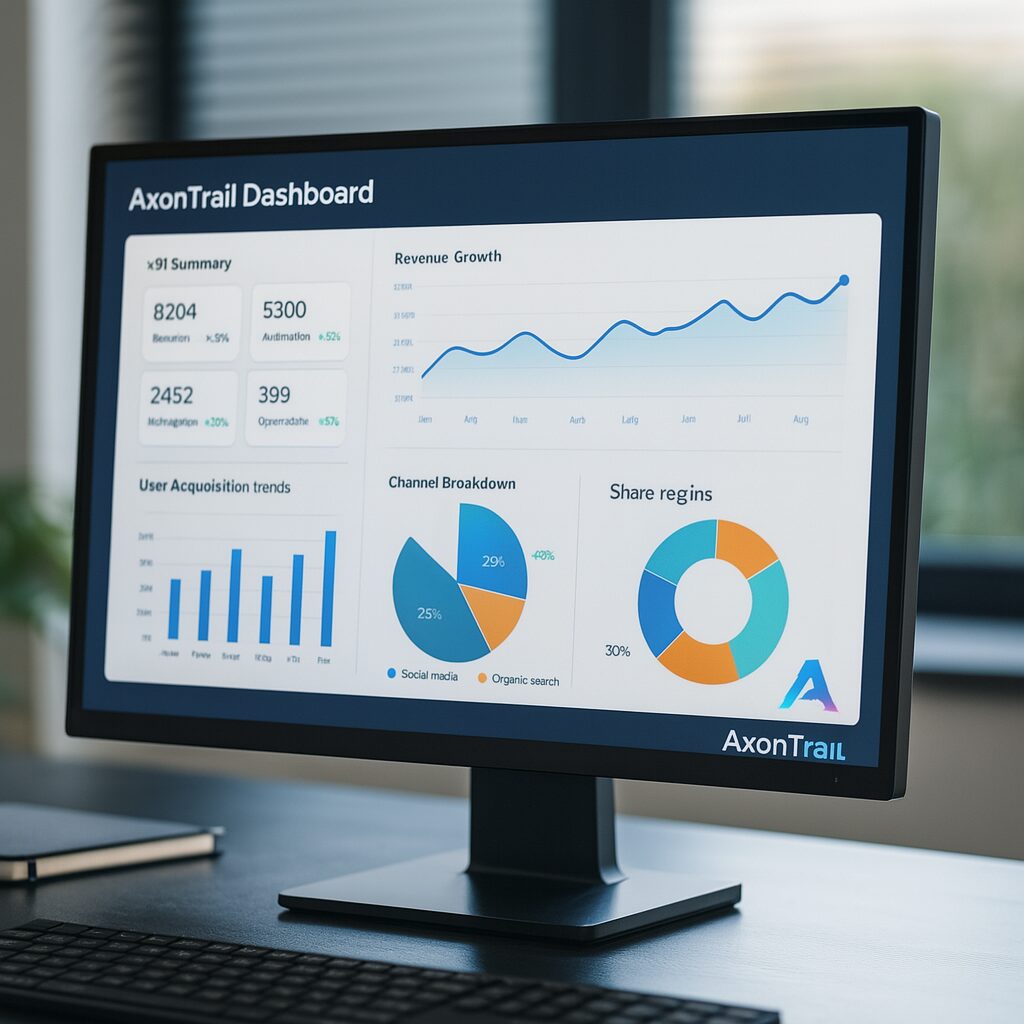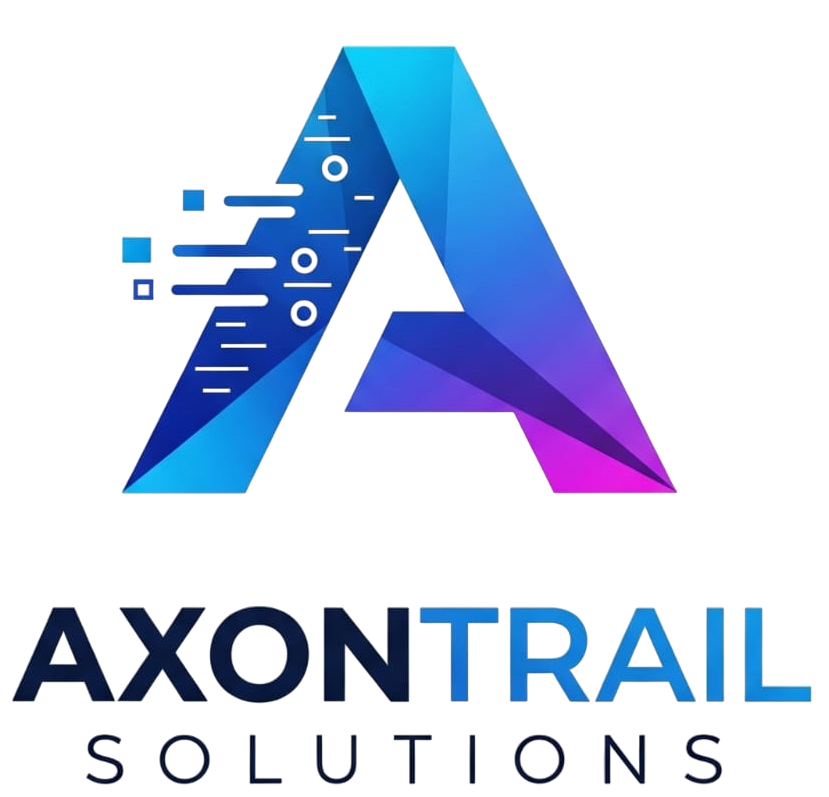
- July 9, 2025
- AxonTrail Editorial Team
- 0
Table of Contents
ToggleHow Registers to Dashboards Unlock Success: Real-World Digital Shift Stories
Introduction
In an era defined by rapid innovation, the transformation from manual record-keeping to digital insights marks a watershed moment for businesses of every size. For decades, companies relied on paper registers, handwritten ledgers and siloed spreadsheets to track sales, inventory and customer interactions. Today, leading organisations have embraced the journey from registers to dashboards, harnessing modern platforms to consolidate data, automate workflows and drive growth. These success stories reveal how the right digital strategy empowers teams, enhances accuracy and elevates decision-making—turning historical headaches into competitive advantage.
Who Benefits from Registers to Dashboards?
Small- and medium-sized enterprises, family-run shops, professional services firms and manufacturing houses all stand to gain when they evolve from registers to dashboards. Solo proprietors free themselves from the burden of manual entries, instantly visualise cash-flow trends and reduce costly errors. Multi-location retailers overcome fragmented inventory data by synchronising stock levels across outlets, ensuring the right products reach the right customers. Even niche consultancies and creative agencies transform project profitability when they shift from registers to dashboards, analysing billable hours, expenses and client-specific KPIs in real time. At every organisational scale, the transition from paper-bound registers to interactive dashboards fuels clarity and agility.
What Does “Registers to Dashboards” Mean?
The phrase registers to dashboards symbolises more than a technical upgrade—it embodies a cultural shift towards data-driven leadership. Registers represent static, retrospective views: pages of numbers requiring manual consolidation. Dashboards, by contrast, offer dynamic displays of live metrics, visualisations and alerts. Moving from registers to dashboards involves deploying cloud-based business applications that connect sales, finance, inventory and customer relationship management. Data flows seamlessly from point-of-sale terminals into central repositories, feeding real-time charts, tables and scorecards. This evolution liberates staff from tedious admin, while business leaders gain transparent, up-to-the-minute insights.
Why Make the Leap from Registers to Dashboards?
Several compelling factors drive enterprises to transition from registers to dashboards:
Accuracy and Compliance: Manual registers invite transcription errors and audit headaches. Dashboards enforce data validation, automated tax calculations and immutable logs, ensuring compliance with regulatory standards.
Speed of Insight: When information resides in registers, compiling monthly or weekly reports can take days. Dashboards update instantaneously, highlighting anomalies and enabling swift corrective action.
Resource Optimisation: Teams that once spent hours reconciling paper registers can now focus on strategy, innovation and customer engagement—maximising human potential.
Scalability and Resilience: As businesses expand, paper registers buckle under volume. Digital dashboards scale effortlessly, supporting new locations, product lines and market channels without additional manual effort.
Enhanced Collaboration: Registers often live in a single drawer or departmental silo. Dashboards democratise data, granting cross-functional teams access to shared performance indicators wherever they operate.
By embracing the transition from registers to dashboards, organisations unlock these advantages and build foundation blocks for sustainable growth.
How to Transition from Registers to Dashboards
The journey from registers to dashboards follows a structured roadmap:
Assessment and Visioning
Begin by cataloguing your existing registers: sales books, invoice logs, inventory counts and labour diaries. Identify pain points—data duplication, late reporting or compliance gaps—and define success criteria: real-time dashboards, automated alerts and self-service analytics.Solution Selection
Research platforms that specialise in rapid deployment and low-code integration. Choose tools that support key modules—billing, stock management, HR and CRM—and ensure they can absorb data from legacy registers without loss.Pilot Implementation
Launch a pilot in one department or location. Configure data mappings from registers to dashboard inputs, train power users and collect feedback. Tweak data flows, visual designs and alert thresholds until the pilot meets defined success metrics.Full-Scale Rollout
Extend the platform across the organisation, importing historical data from registers where it adds value. Consolidate all transactional sources into a central data lake, feeding unified dashboards that support mobile and desktop interfaces.Change Management
Complement technical deployment with user education: workshops, video guides and one-on-one coaching sessions. Celebrate early wins—faster month-end closes, error reductions—and reinforce the value of moving from registers to dashboards.Continuous Optimisation
Dashboards are living assets. Regularly review key metrics, solicit stakeholder input and refine visualisations. Integrate advanced analytics—predictive models, what-if simulations and automated recommendations—to elevate dashboards from descriptive to prescriptive.
By following these phases, businesses smoothly navigate the shift from static registers to vibrant dashboards.
Real Success Stories
Case Study 1: Local Retailer
A family-owned grocery outlet struggled to reconcile daily cash registers with supplier invoices, resulting in stockouts and overstocks. After adopting a unified platform, the retailer moved from registers to dashboards, linking point-of-sale terminals to inventory charts. Within weeks, shrinkage dropped by 20%, and reorder cycles shortened by two days. The owner, once mired in hand-written logs, now reviews profit margins and best-selling categories on a tablet—anytime, anywhere.
Case Study 2: Professional Services Firm
A midsize consultancy relied on paper timesheets and manual invoicing. Tracking project profitability involved weeks of spreadsheet work. By shifting from registers to dashboards, the firm automated time capture and billing. Real-time dashboards display utilisation rates, overdue receivables and revenue forecasts. Partners now make data-backed decisions on staffing and pricing, boosting utilisation by 15% and client satisfaction by 10% within a single quarter.
Case Study 3: Light Manufacturing
A small parts manufacturer maintained separate work orders and quality-control registers. Defects went undetected until end-of-day audits. Implementing an integrated dashboard solution closed the loop between production registers and quality reports. Management tracked yield rates live, intervening immediately when run-rate dips occurred. The shift from registers to dashboards reduced rejects by 30% and improved on-time delivery by 25%, elevating customer trust and order volume.
Key Benefits of the Registers to Dashboards Approach
Timely Decision-Making
Dashboards convert raw register entries into meaningful insights. Executives can compare weekly trends, identify bottlenecks and pivot strategy in days instead of months.Operational Transparency
With registers, data often stays hidden. Dashboards broadcast critical metrics across teams—production yields, credit-control ageing and sales revenues—fostering accountability and alignment.Cost Efficiency
Eliminating paper registers cuts administrative labour and reduces error-correction costs. Dashboards run on shared cloud infrastructure, offering predictable subscription pricing without capital outlays.Enhanced Agility
Modern dashboards support mobile and offline modes, enabling field teams to access performance data from remote warehouses or sales territories—empowering faster responses to market changes.Strategic Growth
When data flows freely from registers to dashboards, leadership gains a singular view of the business. They can model expansion scenarios, assess new products and allocate resources where they deliver greatest return.
Why AxonTrail.com Leads in Registers to Dashboards Transformation
AxonTrail.com specialises in end-to-end solutions that accelerate the move from registers to dashboards. Key differentiators include:
Seamless Data Migration: Automated tools extract and normalise historical register data, preserving audit trails and enabling rapid onboarding.
Modular Architecture: Deploy core dashboards for finance and inventory first, then add CRM, HR and analytics modules as needs evolve.
AI-Powered Insights: Machine-learning algorithms identify anomalies in your registers, flagging trends and forecasting demand.
Intuitive Visualisations: Pre-built templates convert register entries into bar charts, heatmaps and geo-analytics—simplifying interpretation.
Comprehensive Support: AxonTrail.com provides hands-on change-management workshops, ensuring your teams embrace the registers-to-dashboards mindset.
Together, these capabilities empower organisations to bypass technical debt and embark on digital transformation confidently.
Conclusion
The migration from paper registers to sophisticated dashboards represents a fundamental shift in how businesses operate. By shedding manual processes and embracing real-time visualisation, companies unlock accuracy, efficiency and strategic foresight. Whether you manage a neighbourhood store, a professional practice or a light-manufacturing unit, the registers-to-dashboards narrative applies. The success stories highlighted here demonstrate tangible gains: reduced errors, faster decision cycles and improved customer satisfaction.
Embracing the registers-to-dashboards journey is not merely a technology upgrade—it is a commitment to data-driven excellence. As you plan your roadmap, partner with experts like AxonTrail.com to ensure seamless migration, user adoption and ongoing innovation. Your registers may have served you well, but your dashboards will ignite your next phase of growth.
Frequently Asked Questions
1. What exactly does “Registers to Dashboards” mean?
“Registers to Dashboards” refers to transitioning from manual ledgers and paper records to digital platforms that visualise live business metrics via interactive dashboards.
2. Why move from registers to dashboards?
The shift eliminates errors inherent in manual entry, accelerates reporting, and provides real-time insights that empower faster, more informed decisions.
3. How can a small business start the registers to dashboards journey?
Begin with a pilot—automate one major register (e.g., sales or inventory), connect it to a basic dashboard, gather feedback, then scale gradually.
4. Is historical data migration from registers possible?
Yes. Platforms like AxonTrail.com offer automated migration tools to extract, cleanse and import data from existing registers into digital databases.
5. How long does it take to implement a registers to dashboards solution?
A typical phased rollout, including pilot and full deployment, ranges from 2 to 6 months depending on complexity and scale.
6. What kind of dashboards can replace paper registers?
Common dashboards include sales-performance charts, stock-level heatmaps, project-profitability scorecards and customer-engagement trackers.
7. Are dashboards secure compared to paper?
Digital dashboards employ encryption, role-based access control and audit logs, offering far greater security and compliance than paper registers.
8. Can multiple registers feed into one dashboard?
Absolutely. Modern tools aggregate data from sales, purchases, HR and CRM registers into unified dashboards for holistic oversight.
9. What level of IT expertise is required?
Most registers-to-dashboards platforms provide low-code interfaces, requiring minimal IT skills. Vendor support eases configuration and training.
10. How does AxonTrail.com support the registers to dashboards initiative?
AxonTrail.com delivers modular solutions, expert change-management, automated data migration and AI-driven insights to fast-track your digital journey.

